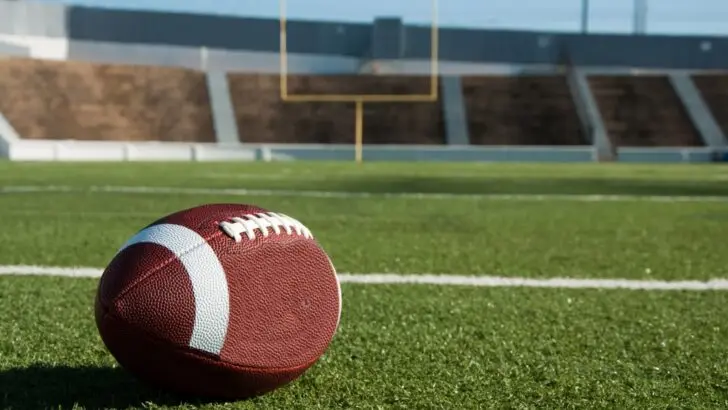The game of football, and more-so in the NFL, is a game of inches. With the offensive team needing to advance the ball 10 yards to begin a new set of downs, each inch and each play on the ball, has consequences on the overall score of the game.
However, often, when a team punts the football to the opposing team, the punting team will allow for the football to roll before retrieving it. Below, we are going to explain, in detail, just why NFL teams let the punted ball roll and how doing so is advantageous to the punting team.
What Is A Punt In Football?
In football, a punt is a kick on the football performed by dropping the ball from the hands and then kicking the football before it hits the ground. Commonly seen in football and NFL games, the punt is typically completed on the final down and as a means to giving the kicking team a more advantageous positioning on the field.
In football, and again in the NFL, the punt is typically utilized when the team on offense is unable to secure a touchdown or is too far out of range of a field goal attempt. By punting the football, the kicking team is able to ensure a more advantageous positioning on the field for their defensive unit.
And while punting the football on the final down is not necessary, by “going for it” on the final down, the offensive team risks turning the ball over on downs and being placed in a disadvantaged situation when their defensive unit takes the field.
As such, it is highly recommended to simply punt the football to the opposing team, ensuring a more difficult, and longer, route for the opposing team to reach their respective end zone. In addition, by simply punting the ball to the opposing team, the kicking team will provide their defensive unit with more advantageous positioning on the field and a lower probability of success for the opposing team.
Common Punting Rules In The NFL
While, theoretically, the concept of the punt is relatively simple and straightforward, there are a few important rules which must be taken into account. These rules have been implemented by the league to ensure a more equitable level of play and to ensure a minimization of injury on the field.
Below, we will list and review some of the more common rules associated with punting the football in an NFL game.
- The player attempting to catch the punted football, that is the receiving team, may attempt a fair catch. A fait catch can be signaled by placed one or both hands in the air to indicate a fair catch attempt and allows for the player to catch the ball without an attempt to advance its position.
- A touchback may be called if any of the following occurs – the kicked ball lands in the receiving team’s end zone without first touching any player, or the receiving team catches the ball in their own end zone and kneels without advancing the ball past the end zone, or the ball enters and then exits the end zone behind the goal line.
- If the player punting the ball is hit, collided with, or interfered with after kicking the ball, then an unnecessary roughness penalty shall be assessed on the receiving team, resulting in an automatic 1st down for the kicking team and possession of the football.
- The length of the punt, commonly referred to as punting yards or gross punting yards, is measured from the line of scrimmage and not from the point from where the ball was punted.
Why Does The Punting Team Let The Ball Roll Backwards?
As mentioned above, the game of football is a game of inches, wherein each inch can help to contribute to a successful drive and scoring play. However, and in an attempt to make scoring more difficult, the defensive team will attempt to “push back” the offensive team as much as possible.
As an example, a team starting from their own 10 yard line will have, and will need, to move the ball forward 90 yards to score a touchdown. However, a team starting at their own 40 yard line will only need to move the football 60 yards to score a touchdown.
By having the offensive team start as close to the opposing end zone as possible, the probability of having a successful scoring drive becomes lower.
As such, if a punted ball is not caught by the opposing team, then the kicking team will look to ensure the ball is as close to the end zone as possible. However, if the punted football enters the end zone, then a touchback will be assessed and the receiving team will begin the drive at their own 20 yard line.
Ideally, and in a perfect situation, the kicking team will allow the football to bounce backwards, and close to their own end zone, opting to pick up the bounced football at the 1 yard line. However, in doing so, the kicking team risks the football bouncing into the end zone and a touchback to be assessed.
